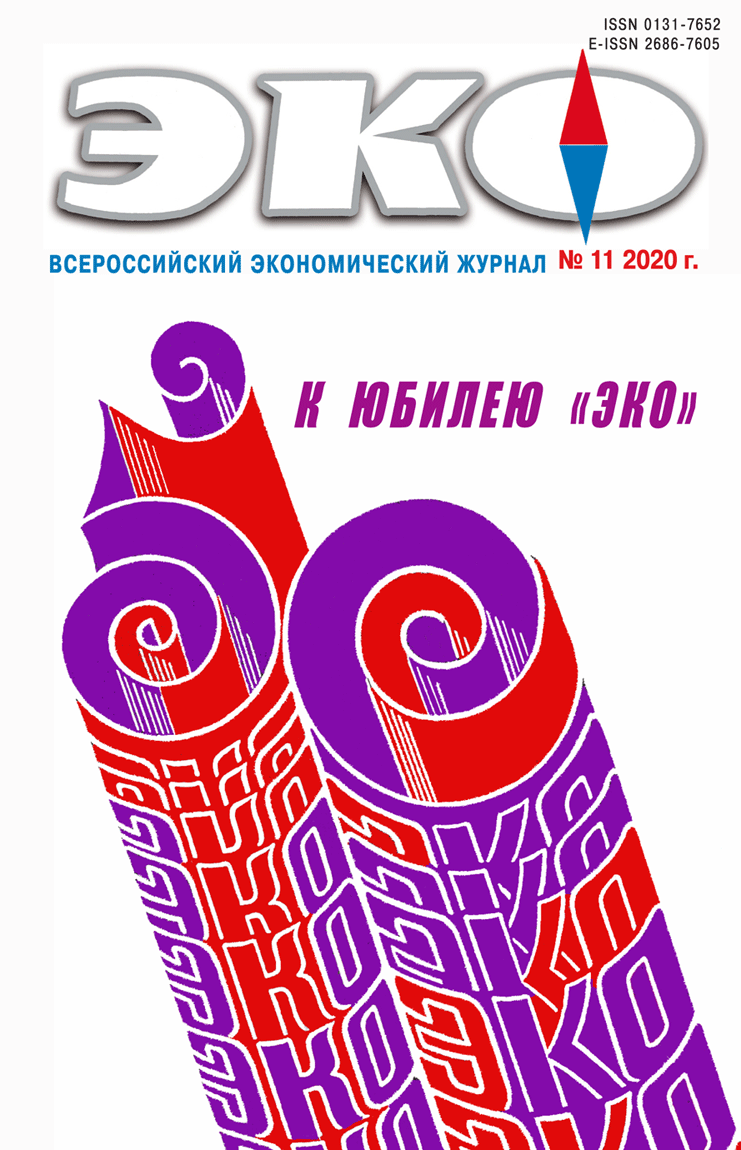FINANCIAL ECONOMY
Published 2020-10-31
Keywords
- unit investment funds,
- mutual funds,
- types and categories of unit investment funds,
- net assets,
- qualified investors
- banks,
- conflict of interest ...More
How to Cite
1.
Dementyev Н. Unit Investment Funds in Modern Russia: Critical Analysis. ECO [Internet]. 2020 Oct. 31 [cited 2025 Jul. 14];50(11):62-8. Available from: https://ecotrends.ru/index.php/eco/article/view/4144
Abstract
Over the past three years, Russian unit investment funds (UIFs) have shown high growth rates. One reason for this is decreased income from bank deposits. However, the assets of UIFs remain meagre as compared with those of similar organizations in Western developed countries. Over half of UIFs shares (about 2 million units) holders are those who invested their privatization vouchers in funds a quarter of a century ago. Investment performance has been deeply unsatisfactory, and now the average assets per person average very nominal two thousand rubles.In contrast to foreign regulated investment funds, Russian unit investment funds mainly serve not the general public, but a small group of qualified investors holding shares worth hundreds million rubles. In recent years, the Bank of Russia has significantly lowered UIF requirements for qualified investors, expecting that they will at least partly attract Russian capital from foreign offshores. Still, it is not clear, whether the regulator’s measures will reduce capital outflow or, on the contrary, increase outflows.References
- Амвросов В. А. Развитие мирового рынка ETF и его перспективы // Горизонты экономики. 2018. № 5(45). С. 139–144.
- Дементьев Н. П. Российские паевые инвестиционные фонды: закрытые общества миллионеров // ЭКО. 2017. № 9(519). С. 176–189
- Корсун А. Ю., Исакова А. И., Протченко А. Р. Особенности налогообложения паевых инвестиционных фондов // В сб.: Теоретические и практические аспекты трансформации налоговой системы России. Материалы Всероссийской научно-практической конференции. 2018. С. 90–94.
- Назырова Д. Р. Налогообложение инвестиционных фондов: зарубежный опыт и возможности его применения в России // В сб.: Современная налоговая система: состояние, проблемы и перспективы развития. Материалы XII международной научной конференции «Современная налоговая система: состояние, проблемы и перспективы развития». Уфа. 2018. С. 88–95.
- Поздышев В. У ЦБ много вопросов к оценке закрытых паевых фондов. 2013. URL: https://www.kommersant.ru/doc/2363786 (дата обращения: 02.09.2020).
- Помаскина О. В. Тенденции развития паевых инвестиционных фондов на финансовом рынке Российской Федерации // Инновационное развитие экономики. 2018. № 4 (46). С. 238–246.
- Тропина Ж.Н. Новые категории паевых инвестиционных фондов и перспективы развития коллективного инвестирования в России // Вестник Института экономики и антикризисного управления. 2020. № 28. С. 5. URL: https://ieay.ru/wp-content/files/nd/vestnik/28/Tropina-01.pdf (дата обращения: 17.09.2020).
- Duvall, James, and Giles Swan. Ongoing Charges of UCITS in the European Union. 2019. URL: www.ici.org/pdf/per25–07.pdf (дата обращения: 02.09.2020).
- Plantier, L. Christopher. Globalisation and the Global Growth of Long-Term Mutual Funds. 2014. URL: www.iciglobal.org/ pdf/icig_per01–01.pdf. (дата обращения: 02.09.2020).
- Reid, B., Gallagher, E. An Overview of the U. S. Regulated Fund Industry // Business Economics. 2014. № 49. Pp. 271–281.

